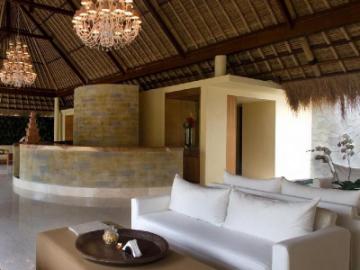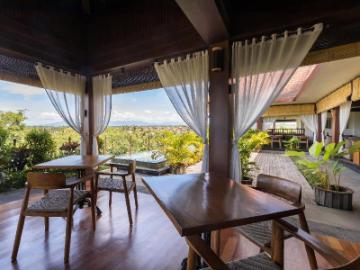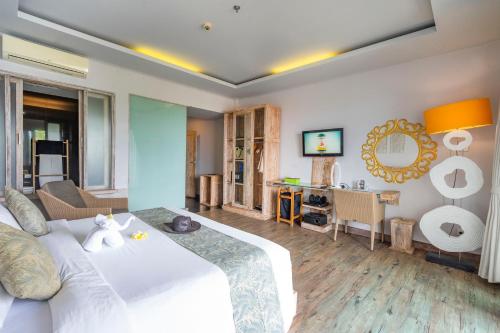One of the most unique activities to do while in Bali is to visit Ubud’s fascinating monkey forest. Officially named the Sacred Monkey Forest Sanctuary, Ubud Monkey Forest is a nature reserve and is home to over 1200 long-tailed macaques. It is also still used by the local community for worship as there are three temples within the forest grounds, including the impressive 14th-century Pura Dalem Agung. The forest itself is also quite beautiful and pleasant to walk through, even if there weren’t any monkeys, even if they are the main draw to the forest. To help you plan your visit and get the most out of your time here, we put together this travel guide for visiting Bali’s Ubud Monkey Forest.
Disclosure: This page (Bali’s Ubud Monkey Forest – A Visiting Guide) may contain product affiliate links. At no additional cost to you, we may receive a commission for purchases made through these links. More details can be found on our disclosure and policies page.
Planning a Trip to Bali?
You might be interested in these pages:
Best Things to See and Do in Ubud
Best Things to See and Do in Gili T
The Perfect Three-Week Bali Itinerary
Best Things to See and Do in East Bali
We also highly recommend these travel guidebooks:
Lonely Planet Bali, Lombok & Nusa Tenggara
Bali: The Solo Girl’s Travel Guide
Rough Guides: Bali and Lombok





Ubud Monkey Forest: Location & Map
As the name suggests, Ubud Monkey Forest (also known as the Sacred Monkey Forest Sanctuary) is located near the southern end of Ubud (link to Google Maps).

How to get to Ubud Monkey Forest
If you are staying in town (Ubud), the simplest and most inexpensive way to reach the Monkey Forest is by walking there. There used to be a free shuttle connecting the site with the town center, but to our knowledge, this service has stopped and it’s unclear if it will start up again.
From Ubud Palace, which is often considered the center of town, it’s about a 20-minute walk to reach the Monkey Forest’s main entrance (Google Maps Link of the Main Entrance Location). Alternatively, you can make use of the local taxis.
From elsewhere in Bali, drive times can be highly variable depending on the traffic conditions.
Distance from Kuta: 40 km // Average Drive Time: 1h20 – 1h40
Distance from Canggu: 30 km // Average Drive Time: 1h10 -1h30
Distance from Sanur: 25 km // Average Drive Time: 1h -1h20
Distance from Sidemen: 30 km // Average Drive Time 1h -1h20
In our opinion, the three best transport options to reach Ubud Monkey Forest are: renting a scooter (moped), joining a group tour that hits several nearby attractions within a day or a half-day, or hiring a car and driver (which really isn’t as expensive as it sounds).
You can also use Bali ride-hailing apps such as Gojek or Grab, and make use of local taxis, but these options will typically cost more, especially if you plan on visiting several sites and attractions on the same day. Also, Gojek or Grab are not authorized to pick up people in certain locations where local taxi unions limit their services, including Canggu, Sanur, and Ubud. For more information on getting around the island and the different available options, check out our guide on How to Best Get Around Bali.
We highly recommend Airalo (eSIM card) for your connectivity needs when travelling abroad. Airalo is the world’s first and largest eSIM store with eSIM plans for 200+ countries and regions worldwide.
Getting to Ubud Monkey Forest by Scooter: Once you get to Bali, you’ll quickly realize that scooter rental operators are everywhere. Although most street-side vendors will regularly be the cheapest option, they come short in several other aspects compared with more reliable and established vendors. For instance, most won’t offer roadside assistance or insurance that covers theft, nor do they regularly sanitize the helmets or have their scooters undergo regular maintenance. For this reason, we highly recommend using Bikago for your scooter rentals. Renting from them might be slightly more expensive (but still can be rented for as low as 12-15 US$/€ per day), but you get great peace of mind, as among many other perks, all scooters undergo extensive quality checks.
What you get with your Bikago rental:
-Helmets
-Full tank of petrol and unlimited mileage
-Free Delivery and Collection at your Hotel
-24/7 Roadside Assistance and First Aid Medical Kit
-Charging Mobile Phone Holder
By Car and Driver hire: Hiring a car and driver to explore Bali can be a practical and cost-efficient way to experience a full day of sightseeing. Although this option is more expensive than renting a scooter (typically 40-60 US$/€ per day), you don’t have to worry about navigating the Bali roads and traffic. Also, most cars are modern and air-conditioned, which is welcome in Bali’s humid heat, and the local drivers always know the best routes to take and can optimize your ideal itinerary. Here are some of the best options to choose from:
By Group Tour: Group tours can be a great option to lower costs and reduce the hassle of having to plan an efficient itinerary. Their main downside is they might not exactly be tailored to your specific interests and preferences. But if you are mostly interested in hitting the main sights and attractions, there are these great tour options that can pick you up in multiple towns and visit places including Ubud Monkey Forest:
Ubud Monkey Forest – Ticket Price and Operating Hours
Entrance Fee
The Ubud Monkey Forest has two different entrance fees:
– 100,000 IDR* per person on weekdays (2025), which roughly amounts to 6.00 US$/€.
– 120,00 IDR* per person on weekends (2025)
*slightly less expensive for children
Additional costs are required for parking: 2,000 IDR for scooters and 5,000 IDR for cars for the first hour (1,000 IDR and 2,000 IDR for every subsequent hour, respectively).
Unlike most attractions in Bali, having the exact change or small bills to pay isn’t necessary here as credit cards are accepted.
Opening Hours
Ubud Monkey Forest is open daily from 9 am to 5 pm.
Facilities
There are multiple clean and modern toilets throughout the forest, with the majority being located by the ticket office.
Dress Code
Since the Ubud Monkey Forest contains sacred temples, it’s important to dress modestly. Make sure to cover your shoulders and knees, particularly when entering temple areas to show respect for local customs.
About Ubud Monkey Forest and its Monkeys
The Ubud Monkey Forest is deeply rooted in Balinese history and spirituality. Established in the 14th century, the forest is more than just a tourist attraction, it has been regarded as a sacred place, housing spiritual forces and guardian spirits. The monkeys, seen as sacred animals, symbolize both protection and mischief, fostering a unique connection between humans and wildlife.
Three ancient Hindu temples are found within the forest: Pura Dalem Agung Padangtegal, the Holy Spring Temple, and the Prajapati Temple. These temples are dedicated to various deities and play a significant role in local religious ceremonies. The largest and most important of the three, Pura Dalem Agung, is dedicated to Shiva, the god of destruction and transformation.
In the 20th century, Monkey Forest Ubud gained recognition as a vital conservation area. Efforts were made to preserve its natural beauty, promote responsible tourism, and raise awareness about its cultural and environmental significance, and eventually became the Sacred Monkey Forest Sanctuary. The forest is around 12.5 hectares (roughly 25-to-30 football fields) and today is home to approximately 1,260 monkeys.
The Monkeys
The type of monkeys that live in the forest are Balinese long-tailed macaques. These monkeys are native to the region and are an important part of the forest’s ecosystem and cultural significance.
The monkeys living within Ubud Monkey Forest are divided into 10 distinct social groups (Temple Group, Selatan Group, New Forest Group, Ashram Group, Central Group, East Group, Michelin Group, Utara Group, Cemetery Group, Atap Group) and each group is between 100 and 250 monkeys strong. The social dynamics within each group are complex, with distinct hierarchies and roles.
These long-tailed macaques are not particularly large monkeys, with adult females growing to about 3-6 kg (7-13 lbs) and adult males to about 4-7 kg (9-15 lbs).



Monkey Safety and Precaution Tips
While the monkeys tend to keep to themselves most of the time, they can occasionally get close to or even jump on people. If that happens, the most important thing to do is to stay calm and not panic – sudden movements on your part might scare the monkey and provoke an aggressive response. Just remain still and calm, and soon enough the monkey will lose interest and hop off.
Here are some tips to help minimize the risk of direct contact:
– Do not bring food: Monkeys have an excellent sense of smell and will try to snatch any food or drinks, even if it is tucked away inside a bag or backpack.
– Do not feed the monkey: This should go without saying given the previous point, but feeding the monkeys is prohibited, as they are fed properly by the sanctuary’s caretakers. Giving them snacks like peanuts, candy, or bread can harm their health.
– Secure your valuables: Monkeys love shiny objects, so keep sunglasses, hats, and phones secure (ideally don’t bring what you don’t need).
– Don’t run: Running may provoke the monkeys to chase you, thinking it’s a game.
– Don’t touch the monkeys: even if one jumps on you, the best thing you can do is let it be.
– Avoid prolonged direct eye contact: this can be viewed as a sign of aggression by the monkeys.
– Don’t grin or show your teeth while looking at monkeys: this can also be viewed as a sign of aggression by the monkeys.
– Stick to the paths: you will see loads and loads of monkeys during your time in Ubud forest by sticking to the designed paths, there’s no need to go into their environment.
– Be on the lookout even outside the forest: although the forest is encircled by a fence, this doesn’t necessarily keep monkeys in. You are very likely to encounter a few monkeys on the streets immediately around the forest.
What happens if you get scratched or bitten by a monkey?
Don’t panic! This occasionally happens and typically no additional care is required. If there is a wound, go to the Monkey Forest first aid clinic, where a professional nurse will give any medical treatment that is required to clean and disinfect the wound.
If you are worried about potential diseases, you should know that the monkeys in Ubud Monkey Forest are healthy and are constantly monitored for various diseases including Rabies. There have been no reported cases of rabies in the last 15 years, and a mass rabies vaccination program was undertaken in 2023 as an additional precaution. That said, local medical professionals might advise a rabies shot after a bite, just as a precaution, which typically should be administered within the first 72 hours post-incident. Better safe than sorry!
Take Home Message About Monkey Safety
While you do hear stories of people being bitten, we didn’t witness this ourselves. The forest averages over 3,000 visitors per day and most days go by without any incidents. In fact, during our time in the forest, we only saw one baby monkey jump on a visitor who had gotten too close, and it promptly jumped back off a few moments later without incident.
If you follow the tips we outlined above, there really isn’t anything to worry about and you’ll have a blast visiting Ubud Monkey Forest!
If you would feel more comfortable with a guided walking tour of Ubud Monkey Forest, this is also an option that you can pre-book in advance (and includes the forest entrance fee price).
Ubud Monkey Forest – What to Expect
You will probably start your visit from the main ticket office. It’s a good idea to grab a map of the forest before departing to make it easier to follow where you’ve been and where you are going. Monkeys generally don’t hang out too close to the ticket office, so you’ll probably have to walk a few minutes before seeing them, but don’t worry, it won’t take long, and the scenery along the way is quite beautiful.


Wander Through the Forest
The forest is definitely an enchanting place. The tall tree canopies block out most of the sun creating a much cooler atmosphere. The walking paths are well-maintained and they scenically wind their way through the forest. It’s definitely a nice change of pace from the chaos of Ubud’s busy streets. You’ll also come across scenic bridges, elevated walkways and moss-covered statues. There’s also a giant banyan tree that is known to be at least 100 years old, and possibly much much older.









One of the best photo spots is near a big concrete bridge that passes over a ravine, which is guarded at the front by two stone dragon statues.

Observe the Monkeys and Enjoy the Monkey Play
The main attractions of Ubud Monkey Forest are obviously the playful (and occasionally mischievous) long-tailed macaques. You’ll see monkeys of all sorts, small and large, adults and babies, active monkeys and sleepy monkeys. Typically, the younger monkeys tend to be very active and can be seen running around or jumping from tree branch to tree branch, while the older monkeys are more relaxed and spend more time grooming each other.









Visit the Sacred Temples
As we mentioned earlier, Ubud Monkey Forest is home to three sacred temples: Pura Dalem Agung Padangtegal, the Holy Spring Temple, and the Prajapati Temple. All three hold significant cultural and spiritual importance for the Balinese people and are beautifully set amidst the forest, offering a glimpse into Bali’s unique religious traditions. Though you can visit the smaller two temples, tourists are generally not permitted to enter the larger and most important temple, Pura Dalem Agung Padangtegal.





Is the Ubud Monkey Forest worth it?
We definitely think so! We know some people have complained that the forest can get crowded, but since we’ve always visited early in the morning this was never our experience. Yes, there was a fair amount of other visitors, but never to the point of annoyance as the forest grounds are vast and there are many areas and walking trails. If one area of the forest gets too busy, just walk to another.
The monkeys are also really fun to observe and to watch play around. If you are an animal lover, you’ll definitely have a blast here. Also, the forest itself is quite enchanting and beautiful in its own right, and we think it would be worth a visit even if there weren’t any monkeys here. Finally, it’s also the perfect place to escape the Bali heat, as it’s much cooler in the forest under the tall tree canopies protecting you from the sun.
How Long Do You Need at Ubud Monkey Forest
We recommend planning to spend at least an hour in Ubud Monkey Forest, and ideally, a bit longer so that you don’t feel rushed – 1h30 is about the perfect amount of time. You can definitely stay longer if you want to continue enjoying the cool forest atmosphere and monkey watching, but for most visitors, 90 minutes of exploration will be enough to cover the majority of the forest at a leisurely pace.
Best Time to Visit Ubud Monkey Forest
Best Time of the Year
Although we visited during the dry season, there’s no bad time of year to visit the temple. There’s a higher risk of rain during the wet season (November-April), but that shouldn’t discourage you as there are likely to be fewer other tourists around.
Consider off-peak months like May-June or September-October for a more personal experience with fewer crowds.
Avoid weekends if you want fewer crowds and to pay a lower entrance fee.
Best Time of Day
The best time to visit is definitely in the early morning when it’s cooler and when there a far fewer other tourists around. You will be able to visit the forest in a much more relaxed atmosphere. Arriving early is particularly important on weekends as the Ubud monkey forest is a favorite attraction among the Balinese as well.
If you can’t make it early in the day, try the late afternoon, an hour or two before closing time. It will likely still be quite warm, but the amount of visitors will have started to thin down.
Ubud Monkey Forest vs. Sangeh Monkey Forest
So how does the Ubud Monkey Forest compare with the nearby Sangeh Monkey Forest? VERY favourably in our opinion. We enjoyed our time in Ubud Monkey Forest significantly more than in Sangeh Monkey Forest, for primarily two reasons:
1) The Sangeh site is significantly smaller, so there’s much less to see here. You can walk around all of the paths in less than 10 minutes.
2) You are assigned a “guide” and given a bag of peanuts (both included in the entrance fee). The “guide’s” only purpose is to get you to feed the monkey with the peanuts so that the monkey will climb onto you, at which point he will take a picture and try to sell it to you. This goes clearly against several standard safety precautions and rules when it comes to interacting with the local monkeys, including avoiding direct contact with them and not feeding them any food, particularly peanuts which are unhealthy for them.
For additional information on how both monkey forests compare, check out our guide: Sangeh Monkey Forest or Ubud Monkey Forest – Which Should You Visit?
Sights and Attractions near Ubud Monkey Forest
The closest attractions to the monkey forest are the various temples and rice field trails you can find across Ubud. We particularly enjoyed the beautiful grounds around the Goa Gajah temple, and the Sari Organic rice field walk.





Where to Stay Near Ubud Monkey Forest
In our opinion, the best place to stay is in Ubud, whose location makes it a great base from which to explore the Monkey Forest and several other attractions around Bali. All of the following are some of the best mid-range hotel accommodations located within walking distance from the city center:
Komaneka at Rasa Sayang Ubud Hotel
















Planning a Trip to Bali?
You might be interested in these pages:
Best Things to See and Do in Ubud
Best Things to See and Do in Gili T
The Perfect Three-Week Bali Itinerary
Best Things to See and Do in East Bali
We also highly recommend these travel guidebooks:
Lonely Planet Bali, Lombok & Nusa Tenggara
Bali: The Solo Girl’s Travel Guide
Rough Guides: Bali and Lombok
Photography Gear
If you like our photography, you might be interested in some of the gear we use to shoot our travel and hiking destinations.
Camera Body – Nikon Z 6ii Fx-series Mirrorless Body
Main Lens – NIKON 24-120mm F/4G ED VR AF-S
Zoom Lens – Sigma 745-306 150-600mm f/5-6.3
Polarizing filters – Urth Circular Polarizing (CPL)
Camera Tripod – K&F Concept 64-inch Camera Tripod
Mini-tripod – Lammcou Flexible Camera Tripod
Camera/hiking backpack – Vanguard Alta Rise 48 Backpack
Universal Travel Adapter – VYLEE Universal International Power Travel Plug
Other Travel Essentials
Travel Insurance
SafetyWing is a travel insurance company that offers comprehensive coverage for travellers. Includes Medical Insurance and Travel Insurance. Primarily geared towards long-term travellers, digital nomads, and expats.
e-Sim cards
Airalo is the world’s first and largest eSIM store with eSIM plans for 200+ countries and regions worldwide. With Airalo eSIMs, travellers can get connected the moment they land at their destination and avoid nasty data roaming charges
eSIMS are a sustainable alternative to single-use SIM cards – they are 100% digital, require less energy to produce and be re-used rather than disposed of.
Car Rentals
Discover Cars is our go-to website for car rentals. We almost always find our preferred rate there.
Transfer from Airport
Welcome Pickups is our favourite private transfer service, which you can pre-book at a fixed price. Currently available in 220 cities all over the world (mostly in Europe, but with several major cities in Asia, the Middle East and the US).
Kiwitaxi is another private transfer service – we haven’t tried it yet, but it’s currently available in a few more countries (102 as of 2024).
Hotels and Accommodations (coming soon)
Photography Prints
If you found this blog useful, you can help support our blog by purchasing low-cost digital prints. Printed physical prints are also available for purchase.








—–
Well, that wraps it up! We hope you enjoyed our travel guide on Bali’s Ubud Monkey Forest and that it will prove useful for planning your trip.
—–
You might also be interested in these related pages:























